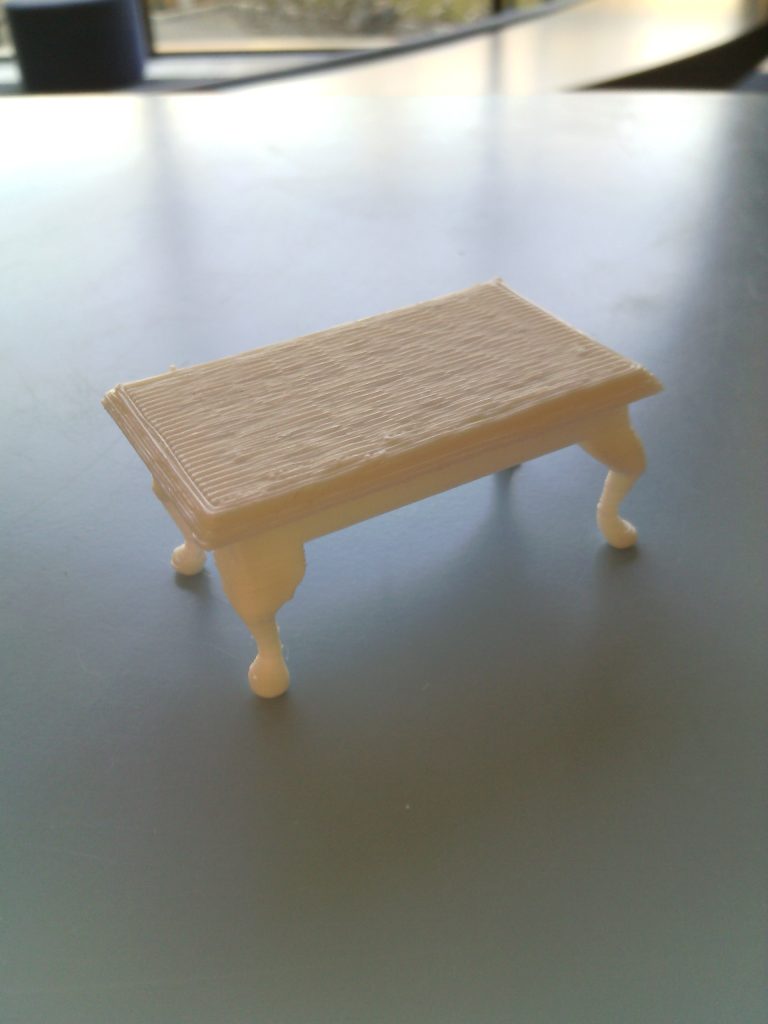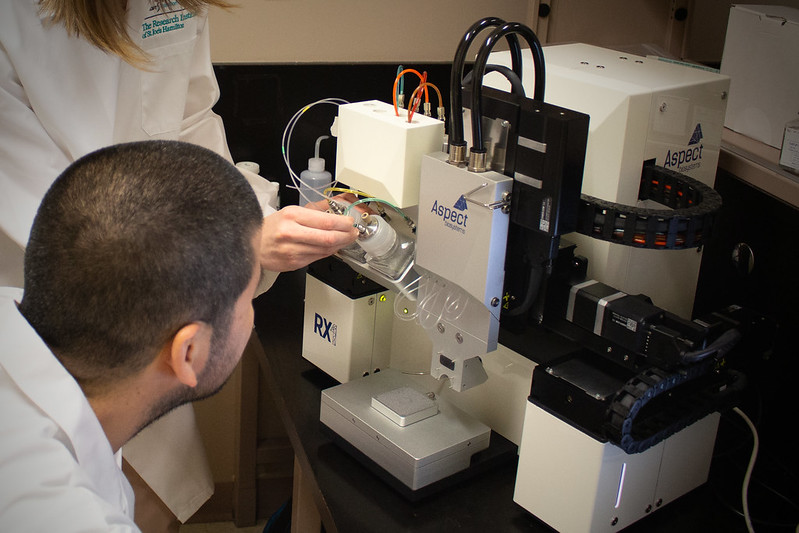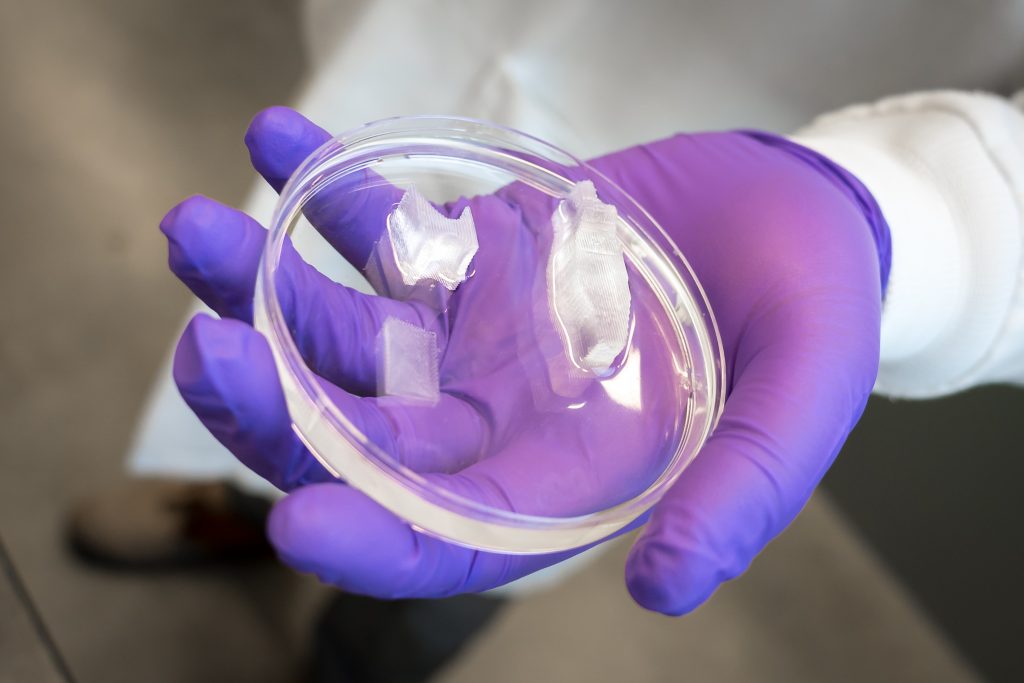Have you ever imagined that you could use a printer that instead of printing your homework on a piece of paper it could print a three-dimensional object like a cell phone case or a miniature dog? This has become a reality for the last couple of years with the use of 3D printers that differ from the conventional printer you have at your house. Although you can use a 3D printer to create small items like toys to decorate your desk, many specialists in science and technology are trying to expand its applications and employ it to improve our lives in various ways. With that in mind, another promising technology has arisen recently. That is 3D bioprinting, developed to create tissues and organs for use in the biomedical field.

What is 3D bioprinting?
Bioprinting is an additive manufacturing process that aims at the production of engineered tissues or organs. The difference between bioprinting and other forms of 3D printing is that the first uses biomaterials as inks whereas the latter uses materials such as plastic, metal, and ceramic. More precisely, the inks comprise of cells and growth factors that are combined to give rise to a structure that imitates our tissues and organs. However, creating a human organ from scratch is not a simple or easy task. It requires the collaboration of many scientists with different skills and areas of expertise, such as developmental biologists, cell biologists, engineers, material scientists, and more. Not all attempts have been successful and there has been no fully functional organ printed for use in patients thus far. However, scientists are optimistic and believe that the technological advancements that will be available in the next years will make the production of functional engineered tissues and organs possible and at a low cost, to benefit healthcare.

Steps of the bioprinting process
What are the steps that researchers follow to 3D print biological tissues? First, they have to create a digital model of what they want to print. They do so by using CT and MRI scans with the assistance of computer programs. The model is then processed by a program, which analyzes its geometry. It determines all the details that the bioprinter will need in a file. The file is sent to the printer that reads the instructions and follows them one by one forming the 3D organ, layer by layer. The ink that prints the organ is called bioink, as we mentioned before because it consists of cells that will comprise the living material. The bioink includes a biopolymer gel as well, such as collagen, hyaluronic acid, or cellulose that provides the matrix on which the cells are supported in order to grow and multiply. When the printer deposits the bioink, each layer that is formed usually has a thickness of around 0.5 millimeters. The layers are liquid in the beginning and solidify as the process goes on, although this process can also be assisted by additional processing to ensure the structure’s stabilization.
Why is 3D bioprinting needed?
One of the biggest problems that 3D bioprinting is believed to be able to tackle in a few years is the increasing demand for transplants. You might be aware that the transplant waiting lists are very long. Many people die every year, waiting for a transplant. Even when a compatible organ is found and is transplanted to the patient, it isn’t always successful. The transplant might be recognized by the immune system as foreign and rejected, making it even more difficult for future transplantations to succeed. Even if the transplantation succeeds, the patient will have to be treated for the rest of their life with immunosuppressants, causing several side effects from mild to severe such as infections or even cancer. As the field of bioprinting evolves, 3D organs might be able to be used for patients in need of a transplant. These organs can be produced specifically for each patient, with the use of their own cells to minimize the rejection probability, which is the purpose of personalized medicine.
Although 3D organ transplantation is the main objective, researchers also aim at simpler procedures like tissue repair. A few examples are the use of appropriate cells for the treatment of the heart after a heart attack or damaged skin and nerves. There have even been attempts to regenerate bone tissue, something that would benefit the production of prosthetics. Bioprinting has applications in dentistry as well, with the creation of dental implants. Since the production of fully functional transplantable organs still has a long way to go due to the complexity of human biology, either in the micro or macro-environment, scientists are at least trying to create “organs on a chip.” These are mini organoids that mimic our real organs and can be used in a lab. Researchers can replace animal models with them to unravel the mechanisms of organ functions. Furthermore, pharmaceutical companies can use them to test drugs before they move on to clinical trials and, consequently, reduce the need for animal testing.

Challenges and Ethical Issues
It seems that 3D bioprinting is still in its early days, as there are many unanswered questions regarding either the process of creating a functional organ or ethical issues that need to be taken into account.
An organ’s structure is not simple at all. The arrangement of cells inside the tissues and organs is very complicated. However, it has to be replicated precisely for the artificial product to survive and function as if it was made by nature. Moreover, there is not just one type of cell inside an organ and the organ does not work on each own. Rather, there is constant communication with other organs and structures in the body, otherwise the organism wouldn’t work as a whole. All of these details need to be considered and technology is not that advanced yet to allow us to replicate nature so successfully. Another hurdle that has to be addressed is the construction of blood vessels that are necessary to keep the organ alive inside the body since their role is to exchange oxygen and nutrients with carbon dioxide and waste. Capillaries, in particular, are the most difficult to make due to their very small diameter.
As far as bioethics is concerned, the production of human organs raises lots of questions. It is believed that 3D printed organs will be cheaper than traditional transplantation procedures and patients will not have to deal with the rules, criteria, and moral issues of transplant lists to receive a donation. However, people worry whether the organs will be available to all those in need, regardless of their social and economic status. Another possibility that requires careful examination is the risk of experimentations conducted on humans since animal studies will be reduced. When such revolutionary fields develop in the scientific world, it always raises questions about whether there can be human enhancements, for example, the treatment of muscles to provide elevated performance or the manufacture of stronger bones. Therefore, we realize that 3D bioprinting might be able to solve many serious issues in the biomedical field, but technology should always be used in favor of both mankind and the environment, without putting our world in danger.
Sources:
https://interestingengineering.com/the-science-fiction-world-of-3d-printed-organs
https://www.the-scientist.com/news-opinion/on-the-road-to-3-d-printed-organs-67187
For more information:
https://www.3dnatives.com/en/bioprinting-projects-3d-printed-organs-070420205/#!
